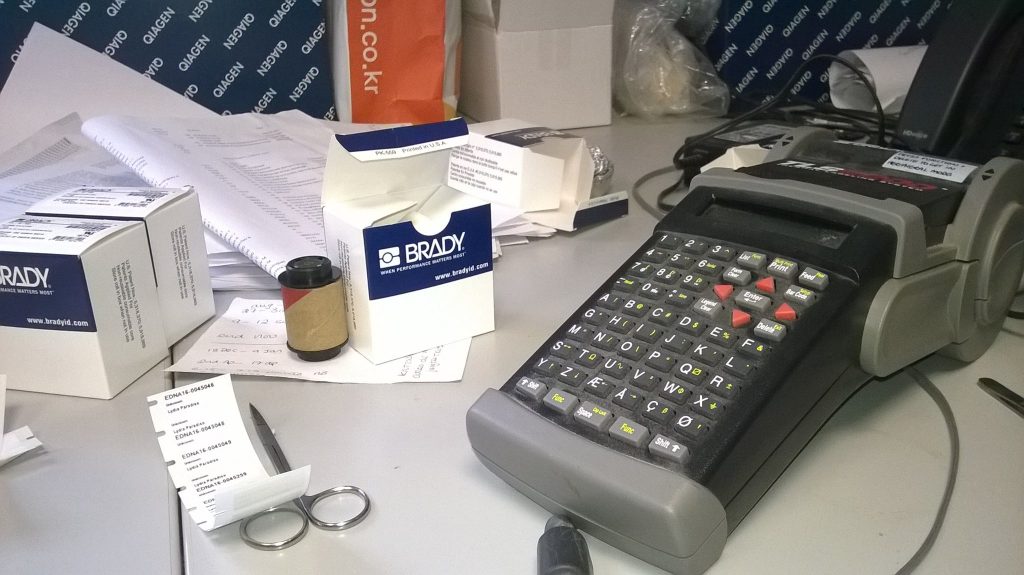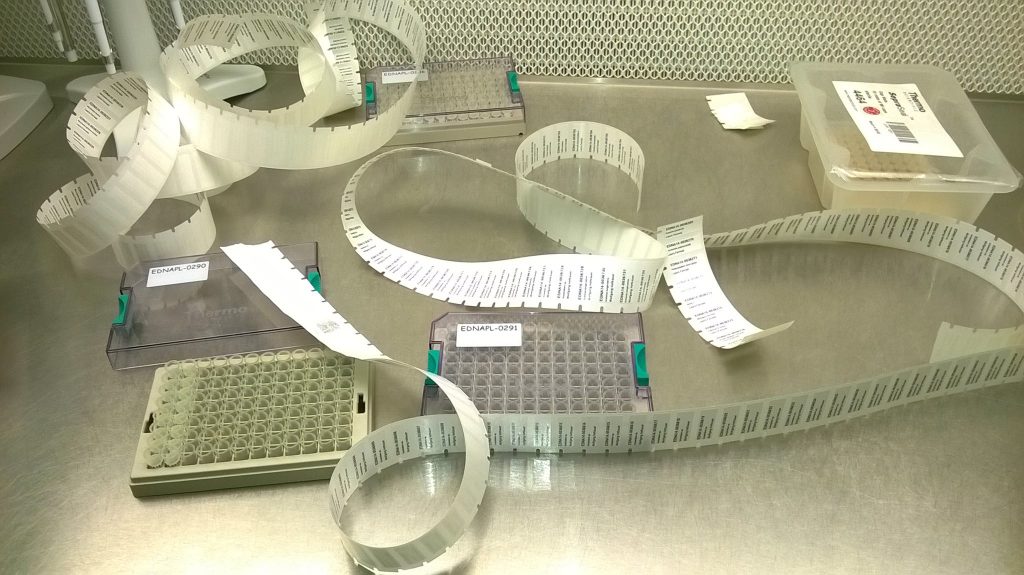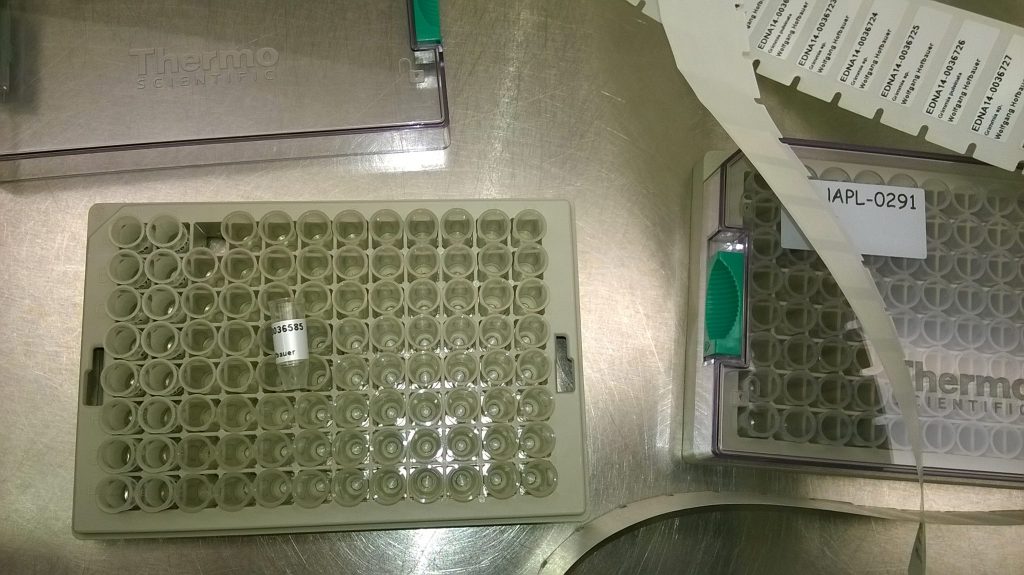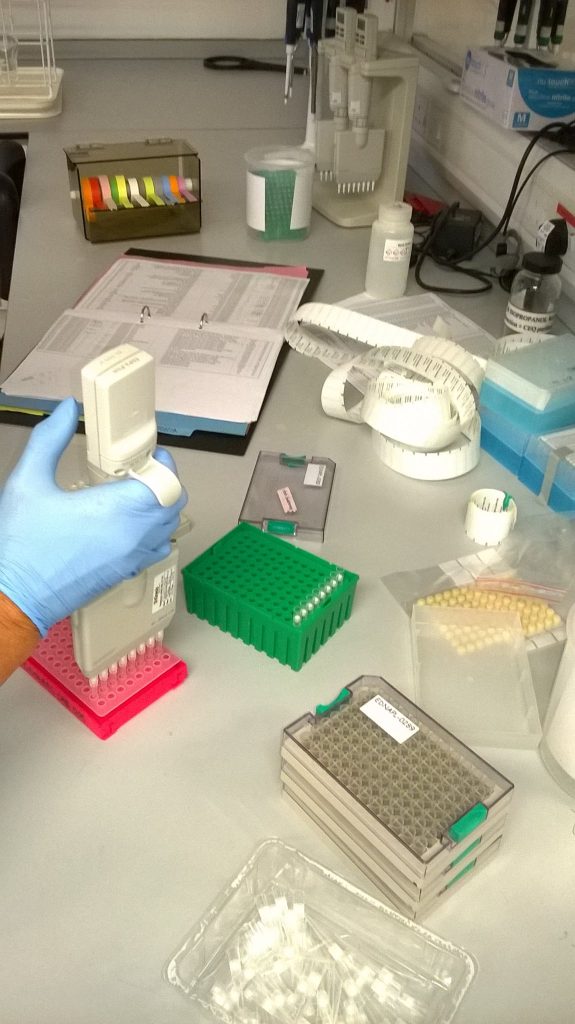Over the years, many different people have used the molecular laboratories at RBGE, to work on a multitude of projects on a multitude of plants and fungi. Some are staff members who stay for decades, others students who are only in the lab for a matter of months. Every time DNA is extracted and used in a molecular project, the amplified gene regions are processed and then the plastic tubes that they were in are sent for recycling – but the extracted DNA is kept in a DNA bank, in case it is needed for further research. Logistically, managing this DNA can be problematic. Scientists like to use their own numbering systems when they’re working (mine used to be one of the commonest – my initials followed by consecutive numbers, a system which worked perfectly until some of my extractions ended up in the same freezer as extractions by Dr Linda Fuselier), something quick and easy to scrawl onto the plastic tubes. This can link to collection information written in a lab-book, including who collected the plant, what date it was collected, and what country it came from. However, as people move on, and as the years pass, it becomes increasingly difficult to find any particular sample or set of samples, particularly when several sets of people share the same initials – and this is compounded by having to rummage through boxes of frozen DNA samples being kept at either -20° or -80°C. Few places at the Botanics are less pleasant than the dank room that contains our -80°C freezers!
The frustrations associated with rooting through inconsistently labelled DNA collections led Dr Michelle Hart and Alex Clarke, in 2006, to instigate a standardised format for DNA labelling, with samples of DNA identified as part of the RBGE DNA bank and assigned EDNA numbers, the format of which consists of the year the DNA was banked, followed by a multi-digit identification number. For example, the last EDNA number that we have issued is EDNA16-0045851, for DNA extracted from the moss Weissia controversia. Due to uncertainties about institutional databases, in its early years the DNA bank was curated through Excel spreadsheets; this was revamped and upgraded in 2011 to the database that we still use today. Information about the methods and date of DNA extraction, the material’s collector, and the place of collection are all stored and easily retrieved, critical information if the DNA is going to be used to provide data for future publications. The EDNA number stays on all downstream files that are created from the DNA – lab books, raw sequence files, and it is also included as the isolate number in GenBank submissions – meaning that all molecular data generated at RBGE is still valuable after people have moved on and lab books have been mislaid.
As to what happens to the actual DNA extraction, long-term storage involves transferring the liquid into a small barcoded and labelled tube in a lockable and numbered 96-tube rack, which will be kept on a labelled shelf in a -80°C freezer. The system is not perfect, however – banking or recovering the DNA samples still involves a trip to our mildewy bank room…




